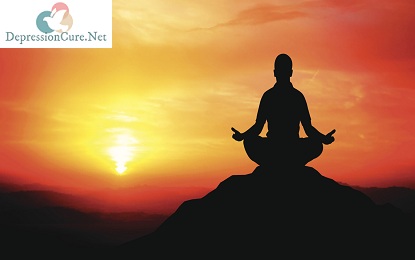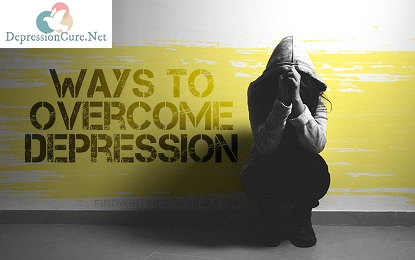How To Do Meditation
The goal of meditation is to achieve concentration and peace of mind and, thus, ultimately, the purpose of ascending to a higher level of self-consciousness and inner peace.
This information will be astonishing for you that meditation can take you anywhere and at any time, can lead you towards peace and gentleness, in the meantime, it does not matter what is happening around you.
This article will introduce you to the basics of meditation, enabling you to begin the journey towards knowledge and happiness.

How do you do meditation?
Method 1 – Preparation for meditation
Choose a quiet environment:
The practice of meditation should be done in an environment that is free of noise and peaceable. This will especially enable you to focus on your goals and save your mind from the barrier of exterior things.?
Try to find a place where you do not have any external obstacles in meditation moments – even if it lasted five minutes or twenty-five minutes. This place doesn’t need to be huge – the place of a stroll, or even the office, if there is a chance of privacy in it, then it can be used for meditation.
Those who are new to meditation, it is essential to avoid any external distractions for them. Turn off the TV, phone, or other shuffle equipment.
If you have to play music, then choose cool, recurrent gentle tunes that do not break your concentration. The second solution is to start a small fountain of water – the musical sound of running water can be very peaceful.
Know that the place of meditation is completely muted, so there is no need for earplugs. The sound of barking, vehicle honking, or any other type of sound will not make obstruction in effective meditation.
On the contrary, letting these voices do not dominate their thoughts and being aware of them is an essential symptom of successful meditation.
For many people, it is sufficient to meditate in open spaces. If you do not sit near a crowded street or noisy things, then you can also find peace under a tree or sitting on a green grass in your favorite corner of the garden.
Wear Comfortable Clothing:
One of the main goals of meditation is to calm down and prevent external factors. If you are uncomfortable physically because of your tight and shingle clothes, it can be challenging. Wear loose clothes during the practice of meditation and do not forget to take off your shoes.
If there is a cool place to meditate, wear a sweater or cardigan. And, If you do not do this, the cold feeling will dissolve your thoughts, and you will be forced to stop your practice in a short time.
If you are in the office, or at a place where clothes are comfortable to change, then do not hesitate to keep yourself as comfortable as possible. Unfold shoes and jackets, leave shirts or blouse collars open and also remove the belt.
Determine how long to meditate:
Before you begin, it should decide how long you have to meditate. Many experienced seekers insist on twenty minutes sessions a day twice, although as a novice, you can start carefully five minutes a day.
Should also try to meditate every day at the same time – whether it’s your first 15 minutes of the morning or five minutes of lunchtime. Whatever time you choose, try to make meditation an unbreakable part of your daily routine.
Click Here To Read: Top 25 Ways To Reduce Stress – How To Reduce Stress
After fixing a specific time frame, stick to it. ‘Not being able’ – Do not leave it at all due to any negative impression – practice in meditation will take some time. The most important thing at this time is that the effort should be continued.
You will want to keep an eye on the time, but watch the clock again will not give you any particular advantage. Think about applying a sweet alarm to alert yourself to the end of the exercise, otherwise add the conclusion of your practice to a specific event – like arising from your partner’s bed.
Stretching:
In meditation, you have to sit in one place for a certain period, so before starting it, it is necessary to reduce any stress or tightness in the body.
Stretching the limbs for one or two minutes loses the body, can help both the body and the mind to prepare correctly for meditation. It will also keep your mind away from the concentration of meditation and go to any hurt point of the body.
If you are sitting in front of the computer, especially stretching the neck and shoulders, and do not forget the lower part of the back. To meditate in Padmasana (yoga), it can be helpful to stretch the legs, especially to the inner part of the thigh, and to stretch.
Click Here To Read: 20 Ways About How to Calm Yourself During an Anxiety Attack
Sit in a comfortable posture:
As mentioned above, being physically comfortable in meditation is very important. Therefore it is imperative to find the best currency for you.
Traditionally, meditation is practiced by sitting in the posture of Padmasana or Semi Padmasan on a valley or stance on the ground. For those who are not very flexible for the feet, waist, and lower back, Padmasan’s position will create a tremendous stretch in the lower part of the back and will prevent the torso from being balanced with the spinal cord. Choose a position that will help you stay straight and balanced for a long time.
But, you can sit on a bench, chair, or on a meditation bed without touching feet on each other. Your pelvis should be forward enough so that the spinal cord is standing balanced on both the bones of the hip.
To bend your hip in the exact currency, sit on the front of a thick paddle, or put 3-4 inch thick things under the back legs of the chair. The benches designed for meditation are usually a bit sloping seat.
If your chair is not that specific, then put something under the thickness of half an inch to it to tilt it.
The most important thing is that you are comfortable, be relaxed, and your torso is balanced so that all the loads above the waist will be on your body.
Click Here To Read: 25 ways to make your life simple – How to Make Your Life Simple
Tilt your hips forward. Then, straighten the bones in the spine so that they stay balanced on each other and keep the entire body weight of the trunk, neck, and head so that you have to make a little effort to balance yourself.
Where the stress is felt in the body, leave that area loose. If you are unable to loosen it without breaking your pose, then check for any imbalance and try to reconstruct?your torso, so that the area of ??the body can be comforted.
By keeping the two palms upwards in the traditional currency of meditation, the right palm is placed on the left and kept in the lap. However, you can also keep your hands on your knees comfortably, or they can also hang them.
By closing eyes or opening them, meditation can be done, but as a novice, the best will be to stop meditating and practice meditation. It will remove all your attention from the exterior scenes, with the stimuli, and when you are fully concentrated in chasing your mind, it will prevent you from getting distracted at that time.
Once you get used to meditation, you can practice even by keeping your eyes open. It can be very helpful in those cases if you are feeling depressed, or you have to work hard to get concentrated close to the eyes, or you have trouble painting in your mind (in a small proportion This is often with people).
If your eyes are closed, then they should be “gentle” – that is, they do not have to be centered on any particular thing. However, you do not even go to a trance-like situation.
How do you start Meditation for Beginners?
Method 2 – Prevailing styles of meditation
Follow Breathing:
It is best to start your practice with the most basic and universal, breathing-meditation techniques. Choose a point above your navel and keep the mind at that place.?
During the pulling and drop of breath inward and outward, pay attention to the gradual rise and fall of the stomach. Do not make any conscious effort to change your breathing pattern; just keep breathing in the usual way.
Try to concentrate only on your breathing, and do not think about your breath or do not give any decision on it (for example, this breath was smaller than the previous breath), just try to keep it cautious and stay alert with it.
Click Here To Read: 20 Ways to calm your mind – How to calm your mind
Some psychic images that can help you are:
A coin placed on a point above your navel which arises with breathlessness and fluctuation; The imagination of a floating on the waves in the ocean, which is rising on the waves with the ascension of breath, or the imagination of a lotus flower on its stomach whose petals are flowing with every breath.
When you enter the deep surface of experience and consciousness, then repeating the mantra can be unnecessary.
Focus on a simple visual object:
Just like using the mantra, you can also use a slightly visible object to fill your mind, through which it can reach the level of deep consciousness. It is a form of meditation with open eyes, which can be easy for some people because there is a point in front of the eye to maintain sight.
This visual object can be the same as you want, although many people also feel the burning candle flame in particular. Other possible items may contain divine sculptures or photos like crystals, flowers, and Buddha.
Place the object at the height of your eyes, so that it should not be emphasized on your head and neck. Take a gaze at this, until the peripheral vision does not blur, and your whole image cannot concentrate on that object.
After being entirely focused on the object, you will feel immense peace when no other stimuli do not reach your mind.
The practice of endoscopy:
Insight is another popular technique of meditation, in which a peaceful area within the mind is created and explored until you reach a stage of complete peace.
This built-in place mind can be anything according to your preference, but it should be a unique and personal, not entirely reallocation.
Your imaginary place to be seen can be a cozy room with a hot, sandy beach, a flowery meadow, a noisy forest, and even a burning fire. Whatever place you choose, let it be your sanctuary.
Once you have entered your sanctuary, then turn around it. There is no need to “imagine” the things around you; they are already there. Let them in the forefront of your mind.
Feel the scenes, sense, sounds, and fragrances of that inner space – Feel the heat of fresh air on the face, or warmth in the body. Enjoy this environment, let it be naturally broad, and spacious, more reliable. When you’re ready for departure, take some deep breaths, and then open your eyes.
Keep in mind that next time you can come back to this place of meditation, or imagine a new place. The place you make will be a reflection of your unique and personal personality.

In the self-body inspection, it is alternately focused on each part of your body, and it is left casually loosely. This is an easy technique of meditation, in which you give the body a resting-in-the-minded state of relaxation.
Close the eyes and choose a starting point on your body. Usually, it has a thumb. Focus on whatever sensation you feel in your toes.
You can make a conscious effort to lose any shrinking muscle in your body and remove its stress or tightness. Once the toes are fully rested, then increase your feet and repeat the same technique of relaxation.
Go to the rest of your body, go to the upper part of the knees, thighs, hips, waist, stomach, chest, back, shoulders, hands, fingers, neck, face, ears and head of your head. Whatever time it takes, give it.
After taking each part of the body into rest, now concentrate on the whole body and enjoy the pleasant feeling of peace and comfort. Attract the mind on your breath for a few minutes before coming out of the practice of meditation.
Try heart-cycle meditation:
The heart-circle is one of seven chakras or energy centers located within the body. The heart-cycle is situated in the center of the chest and is associated with love, compassion, peace, and harmony. In the heart-chakra meditation, these emotions come in contact with them and are flown to the world.
To begin this, close your eyes and rubbing the palms of your hands with each other to create heat and energy. Then, place your right hand above the chest, above the heart circle, and put the left hand over it.
Take a deep breath and as you breathe out, pronounce the word “om,” which is the word associated with the vibrations of the heart cycle. Imagine the energy of glowing green color in the shape of radiation from your chest and palms while doing it.
Green is this energy:
Love, life, and all the other positive emotions that you are feeling at the moment are all. When you are ready, remove your hands from the chest and let the energy circulate in the world with palms to your relatives.
Feel your body from inside:
Do you feel a field of energy in your body, especially the arms, and in the foot? No matter if you are not feeling. But think; How are we able to keep the various organs of the body moving? This is the energy field flowing in our bodies. Focusing on the energy field will not only save you in the present but also help you to connect with your nature and the flow of your inner life.
Try soft meditation:
An alternative form of meditation is to meditate while walking, in which the movement of the feet is followed by the consciousness of the body and the earth. If you plan to sit and meditate for a long time, then it will be wise to include the soft meditation in it.
Choose a quiet place to practice vibratory meditation, where there are fewer means of disorientation. This place does not have to be large enough, but before turning, there should be at least seven steps in place and full space. If possible, remove the shoes.
Look forward to your head with your eyes, and your hands will be tied in front of you. Move the right leg one step forward with a slow but balanced move. Forget about any sensation or feeling in the feet and focus your attention on the speed. Wait a moment after walking a step. Only one step should be taken at a time.
Stop both the steps by reaching the end of your walking area. Then turn on the right foot and turn it away, continue to move in the opposite direction from the slow but straightforward steps.
When exercising meditation, concentrate on the movement of feet, in the same way as in respiratory meditation, focuses on the ups and downs of the breath. Try to clear your mind and try to concentrate on the combination between the foot and the earth below.
How do you meditate daily?
Method 3 – Meditation in everyday life
Practice mental perfection in everyday life:
Only the defined sessions of practice should not limit meditation; you can practice meditation all day in everyday life.
For example, in moments of stress, concentrate fully on your breathing for a few seconds and try to free your mind with any negative thoughts or feelings.
The practice of mental fullness can also be done by eating food and by the sensation of eating it.
It does not matter which work you are doing in daily life, sitting in front of a computer or brooms on the floor, try to be more aware of your body’s activities and how you feel at present are doing. It is to live with mental perfection.
Adopt a healthy lifestyle:
A healthy lifestyle can contribute to more effective and beneficial meditation, so try to eat healthy, exercise, and get good and adequate sleep. Before watching, too much TV watching, drinking, or smoking should be avoided, because these activities prevent you from achieving the level of concentration required by numbing the brain.
Read the spiritual scripture:
Although it does not apply in every case, some people can help in spiritual books and holy scriptures to inspire a sense of meditation, inner peace, and spiritual knowledge.
These names can be found in the good books to get started; A Profound Mind of the Dalai Lama: Cultivating Wisdom in Everyday Life, Jane Roberts’s The Nature of Personal Reality, “A New Earth” by Eckhart Tolle and One-Minute Mindfulness of Donald Altman.
If you want, you can take a valuable piece from any spiritual or holy book accordingly, and meditate during the next meditation session
Attend meditation-training classes:
If you are not sure about how to start meditation at home, then it would be useful to be trained in a classroom under the supervision of an experienced teacher.
Classes of meditation often have all kinds of meditation, but you can also go to a spiritual place where all the modes of meditation will be seen, and you will know which will be the most suitable for you.
Try to practice meditation every day at a given time:
This will soon become a part of your daily routine, and you will be able to realize its benefits in more depth and generality.
Before your mind-brain starts to get involved in the stresses and anxieties of the day, meditation takes place only in the morning.
It is not a good idea to rise from direct food and sit in meditation, you can feel uncomfortable in it, and it will interfere with concentration.
Know that meditation is a journey:
The purpose of meditation is to calm down the mind, establish inner peace, and thus go on a higher spiritual dimension, which is often said to be in pure form.
However, there must be an impression that it requires years of practice to achieve the highest level of consciousness experienced by yogis and monks and to attain higher levels of enlightenment.
Meditation is a journey, like climbing a mountain, where every step in the path of enlightenment takes you closer to the peak.
At the beginning steps, you should not overthink about the quality of meditation. At the end of your exercise, as you experience gentle, pleasant, and more peace, then you will know that your meditation was successful.
Advice
It is easy to lose knowledge of time during meditation. A concern of time can also be distracting meditation. Some people believe that putting a timer and leaving the duration of meditation on it is free from this anxiety. Choose a good timer. Conflicts can distract the full alarm noise.
When not meditating, then observe your mood and thoughts as a little aware. You will find that in the days of meditation, you felt more peace, happiness, and fast than the days you did not meditate.
Do what is best for you. For some people that works, there may be techniques that do not work at all for you. Do not be discouraged by this. Always remember the rest!
Do not allow your conscience to crawl with the back door of the mind. Keep an eye on it, but do not add it to yourself.
Meditation practice has shown many beneficial results for a long time, and continuous training is best. Its advantages are; An increase in mental perfection and consciousness, a decrease in stress, a calm and relaxing mood, improving the concentration of memory and memory, and an increase in gray cells in different parts of the brain.
If you want to meditate, but feel tired, torn, or something that you have not succeeded by trying, then do something comfortable. A little jogging, running, then bathing. All of these will relieve stress. Then go back and try again to meditate.
Do not expect immediate results. The goal of meditation is not to turn you into a Siddha Guru or overnight. Without focusing on the results, when meditation is taken only for meditation, it gives the best results.
Having more space for the lungs due to correct posture will make breathing easier. You will notice that most of the muscles of your torso are working to help you breathe, the muscles of your hips to the neck, the primary respiratory muscles, are associated with the diaphragm, they are the diaphragm.
There is very little work to help you. If you are noticing this, then it is a good sign that you have established the right posture. The correct currency is comfortable and comfortable. You feel yourself floating.
The benefits of meditation can be experienced in advance by attaining concentration and mental hygiene through its practitioner of meditation.
What will you do with a nostalgic mind, it is up to you. Some people believe this is the best time to present a desired result before the subconscious mind. Others like to “rest” in this rare kingdom of nirvana, which meets with meditation. By religious people, meditation is often used to connect with God and gain sight.
If you are finding it challenging to meditate for a chosen period, then shorten this time. Everybody can do meditation for a minute or two without infiltrating thoughts. Then, when the waves of the sea begin to calm down, slowly move your meditation session until you reach the desired length of time.
Some of the benefits of less direct meditation for most people are: Sleeping more easily, changes in mood (which can be seen more clearly in people who have taken more than 1,000 hours, just like in Buddhist monks).
Inside the nose and breathing and leaving the head through the mouth will help regulate breathing.
Note: Depression Cure does not provide any type of medical advice, diagnosis, or treatment.





